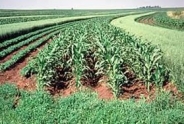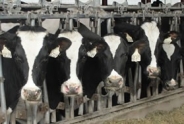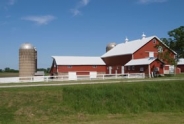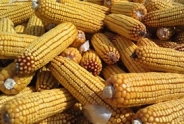Guidance for Manure Applications on Prevented Planting Acres
Guidance for manure applications on prevented planting acres for farms under the CAFO permit and/or following a CNMP
By Sara Latessa, Greg Albrecht, Kirsten Workman
Many acres across New York were unable to be planted to corn, soybeans or new perennial forages due to extended wet conditions during this spring's planting season, resulting in several crop insurance claims.
This has put some dairy farmers in a challenging position. Three scenarios have been described:
- Farms have applied manure last fall (or this spring) and now do not have a crop in the field;
- Farms did not get manure applied and are now working to find the best fields and situations to apply manure during the least risky season for nutrient losses; and
- Farms are looking to be further proactive with manure applications, so when later planted fields are harvested, they aren't pushed into wet weather conditions for a significant portion of their fall manure allocations.
General guidance for summer 2025 manure applications in the context of prevented planting acres
- Farms operating under NY's CAFO permit should always check with their CNMP planner before making changes to planned manure applications. Be sure to update the CNMP with new manure allocations so that farms can document compliance.
- Per the CAFO permit, planners are required to utilize NY Phosphorus Index 2.0 (NY-PI 2.0) when planning new summer 2025 manure applications, as they are intended for crops being harvested in 2026. NY-PI 2.0 may provide additional flexibility for manure applications, especially for farms utilizing cover crops, with whole farm P balances below 12 lbs. P/acre, timing manure applications with planting crops and injecting or incorporating manure within 24 hours.
- Manure being allocated to a crop that will be planted in August (new perennial seedings, small grains, etc.) can be credited toward the 2026 crop year if it is being applied in conjunction with the planting of that crop. You do not need to wait until September/October. Follow the descriptions in P-Index 2.0 for method and ground cover/timing as best fits the specific situation.
- Nitrogen. Nitrogen credits from previous manure applications should follow the guidance in the Cornell University Nitrogen Guidelines for Field Crops in New York. Applications made last fall or this spring would be considered "last year" and be credited for 12% of the organic nitrogen as reported on the manure analysis. Any applications happening this summer, fall or next spring would be counted as "present year" and be credited accordingly based on the source and dry matter content for organic nitrogen and based on the timing of incorporation for the percent of ammonium nitrogen available. Also be sure to follow guidance in the NY Nitrate Leaching Index for beneficial management practices in fields with NLI scores with intermediate or high risk for nitrate leaching.
- Phosphorus. Recognizing this is a unique situation and not a regular occurrence, farms may credit phosphorus from new manure applications as you would normally for the upcoming 2026 crop year and follow the management implications of NY-PI 2.0 for phosphorus or nitrogen-based management for those applications. If a manure application was made in anticipation of a 2025 crop that was not able to get planted and a new application is made this summer/fall, farms should maximize crop removal and it's advised to take an out-of-cycle soil sample this fall to identify any potential increases in soil test P in order to prioritize proactive management across the crop rotation.
- Wherever possible farms should plant a small grain for spring harvest to increase the total nutrient need (and crop removal) to make up for the loss of crop uptake of the crop that did not get planted in the spring of 2025. This will also improve P-Index scores.
Direct communication on 7/22/2025 with the USDA Risk Management Regional Deputy Director, William Barnes verified that a cover crop planted on a field receiving a prevented planting payment can be hayed, grazed or cut for silage, haylage or baleage at any time without reducing a prevented planting payment. You may also plant a perennial hay crop without a reduction. (See Figure 1) However, checking with and informing the farm's crop insurance agent is advised to ensure they are aware of this guidance and there are not other situations that may impact a prevented planting claim and/or payment.
Some scenarios to maximize the utilization of manure nutrients include:
- Plant a small grain crop this August/September in open fields and harvest it as forage next spring. This will increase the total crop removal for the field and help replace forages not planted as a result of wet weather this spring. Plan ahead to decide how many acres the farm or custom harvester can realistically harvest during the short window available in the spring to maximize yield and quality on these crops that mature quickly in the spring. Also consider earlier maturing corn for corn crops that will follow harvest of small grains as forage.
- Split applications can help reduce runoff risk and allow for better nitrogen utilization. Applying a lower rate with the small grain now and then again in the spring in conjunction with planting corn can be a great option.
- Plant a nurse crop of oats, barley or other small grain with legume new seedings. This will increase the nutrient need of the field and protect soil from erosion and nutrient runoff.
- The timeliness of any summer/fall seeding will be critical to its success and in putting on biomass, nutrient uptake, etc. Many areas in NY state have conditions where seeding can start now as long as there is adequate moisture.
- Consider planting intensively managed grass instead of alfalfa for new seedings this summer. It will utilize more manure nitrogen, both initially and in subsequent seasons.
Explore export opportunities now if you are concerned about manure storage capacity. Communicating with crop producing neighbors with open small grain fields could be a good opportunity for an export under these circumstances. Please remember to document all exports appropriately per the CAFO permit requirements.
FIGURE 1. Guidance from Regional Deupty Director RMA
What are my option for planting forage on prevented planting acreage?
Producers have options when planting forage on prevented planting acreage without impacting their prevented planting payments. The below example is for a 2021 prevented planting situation that will not reduce the prevented planting payment.
Producers can:
- Plant forage as a cover crop. The cover crop:
- must be planted and managed according to agricultural expert guidelines including seeding rates, input rates, and NRCS termination dates; and
- can be hayed, grazed, or cut for silage, haylage or baleage at any time.
- Plant a 2022 forage crop with the following options:
- Not insure the forage crop.
- There are no planting date or harvest restrictions; and
- The crop is considered a first crop, regardless of insurance coverage, for the 2022 crop year.
- Insure the forage under a 2022 Forage Seeding policy. If a producer plants a 2022 alfalfa (or other insurable perennial type) crop and choose to insure it with a Forage Seeding policy, they should consult with their crop insurance agent for all details regarding policy provisions and dates for their local area. Producers should consider the following:
- The Forage Seeding policy does not insure a crop that is grown with the intent to be grazed or grazed at any time during the insurance period.
- Earliest planting dates vary by region.
- Final planting dates vary by region.
- End of insurance dates and harvesting restrictions vary by region and by special provision.
- Insure the alfalfa (or other insurable perennial type) under a 2023 forage production policy. If producers choose to insure the forage crop with a 2023 forage production policy, insurance attaches after the stand passes an initial inspection. Sales closing dates vary by region.
- Insure the alfalfa (or other insurable perennial grass mixture) under both a 2022 forage seeding policy and a 2023 forage production policy.
- Not insure the forage crop.
This policy update from 2022 has not been superseded and still stands as current policy. The policy and more information about prevented planting coverage are available online.
Upcoming Events
Crops, Cows & Critters - Southwest New York Dairy, Livestock & Field Crops Newsletter Sponsorship
December 19, 2025
Our two forms of publications feature research-based and timely information from our four specialists, listed to the right, along with local event notifications and Cornell University outreach. This information is provided to participants who range from dairy, livestock, and field crops producers to agricultural suppliers and consultants.
Weekly Email Update: Shared with 625+ households who have signed up with our program.
Monthly Paper Mailer: To reach our stakeholders and farmers who lack internet access, we send out a monthly mailer where your company's logo and contact information would be featured with a mailing list of 330+ households.
If you sponsor our weekly and monthly publications you reach approximately 955 households.
Visit our website to view our newsletters!
2025 Cornell Food Beverage & Animal Feed Manufacturer Survey
December 19, 2025
Industry and Educational Advocates for New York State's Food, Beverage, and Animal Feed Manufacturing industries:
As you know, NYS has a diverse food and beverage manufacturing industry, in both the types of industries that exist and the wide distribution of firms by scale. Many manufacturing firms have strong backward linkages to agricultural production sectors in the state that support both farm-level and downstream food industry firms and consumers. In collaboration with the New York State Department of Agriculture and Markets, a team from Cornell University's Charles H. Dyson School of Applied Economics and Management has recently rolled out the 2025 New York State Food, Beverage, and Animal Feed Manufacturer Survey. The industry will benefit from an updated assessment of the industry that informs private and public investments and opportunities to support firm growth and improved profitability.
Cornell Organic Field Crops & Dairy Conference
March 6, 2026
Waterloo, NY
Farmers, researchers, educators, and agricultural service providers from across the Northeast are invited to the 2026 Cornell Organic Field Crops & Dairy Conference, held Friday, March 6, 2026, from 8:00 a.m. to 4:30 p.m. at the Lux Hotel & Conference Center in Waterloo, N.Y.
Co-hosted by New York Soil Health and Cornell CALS, the annual conference brings together leaders in organic grain, dairy, and livestock systems to share practical tools, new research, and farmer-tested strategies to support resilient and profitable organic production.
Announcements
No announcements at this time.





